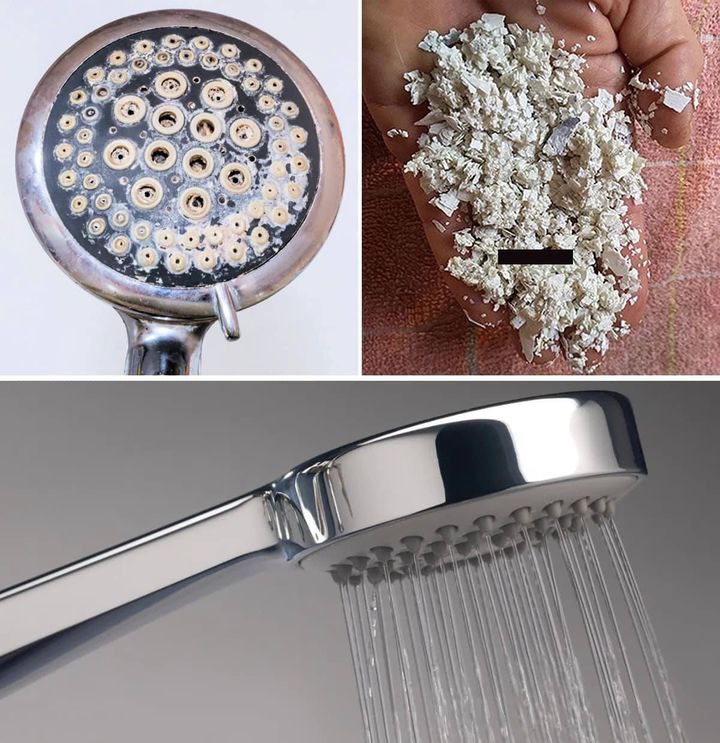ADVERTISEMENT
How to Clean Holes in the Shower Head and Increase Water Pressure
If you’ve noticed a drop in water pressure or a less-than-ideal shower experience, it could be due to clogged holes in your shower head. Over time, mineral deposits from hard water, soap scum, and even bacteria can accumulate in these tiny holes, affecting both the water flow and pressure. The good news is, cleaning your shower head is a simple and cost-effective solution to get your shower back to its optimal performance. Here’s how you can clean the holes in your shower head and increase water pressure with a few easy steps.
Why Does Water Pressure Drop?
The most common cause of low water pressure in shower heads is the buildup of minerals from hard water. Calcium and magnesium, in particular, can clog the tiny nozzles, restricting the flow of water and reducing pressure. This buildup, often referred to as “limescale,” forms as water evaporates, leaving these minerals behind. In addition, soap scum and other residue can build up, further obstructing the water flow.
A dirty shower head can not only lead to poor water pressure but also result in uneven water distribution, with some areas of the shower head delivering more water than others. This uneven spray can make it harder to enjoy a full, relaxing shower.
How to Clean the Holes in Your Shower Head
What You’ll Need:
- White vinegar
- Plastic bag (or a large container if you can remove the shower head)
- Rubber band or string
- A small brush (like a toothbrush) or cotton swabs
- Baking soda (optional)
- Old towel or cloth (to protect surfaces)
Step-by-Step Instructions:
1. Soak the Shower Head in Vinegar
One of the most effective and natural ways to clean the mineral buildup from your shower head is to soak it in white vinegar. The acidity in vinegar breaks down the calcium and mineral deposits, making it easier to remove them.
- If you can easily remove the shower head: Take the shower head off the pipe by unscrewing it with your hands or a wrench.
- If you cannot remove the shower head: Fill a plastic bag with white vinegar and carefully slip the shower head inside. Use a rubber band or string to secure the bag around the neck of the shower head, ensuring that the nozzles are fully submerged in the vinegar.
Let the shower head soak in the vinegar for about 1 to 2 hours. If you’re dealing with heavy buildup, you may want to let it sit overnight for best results.
2. Scrub the Nozzles
After the vinegar soak, take a small brush (such as a toothbrush) or cotton swabs and gently scrub the nozzles of the shower head. This will help loosen and remove any remaining mineral deposits, soap scum, or dirt. Pay special attention to any clogged holes or areas where the water seems to be coming out weakly.
For tough mineral deposits, you can add a little baking soda to the brush or cotton swab to provide additional scrubbing power. The slight abrasiveness of the baking soda can help dislodge stubborn buildup.
For Complete Cooking STEPS Please Head On Over To Next Page Or Open button (>) and don’t forget to SHARE with your Facebook friends
